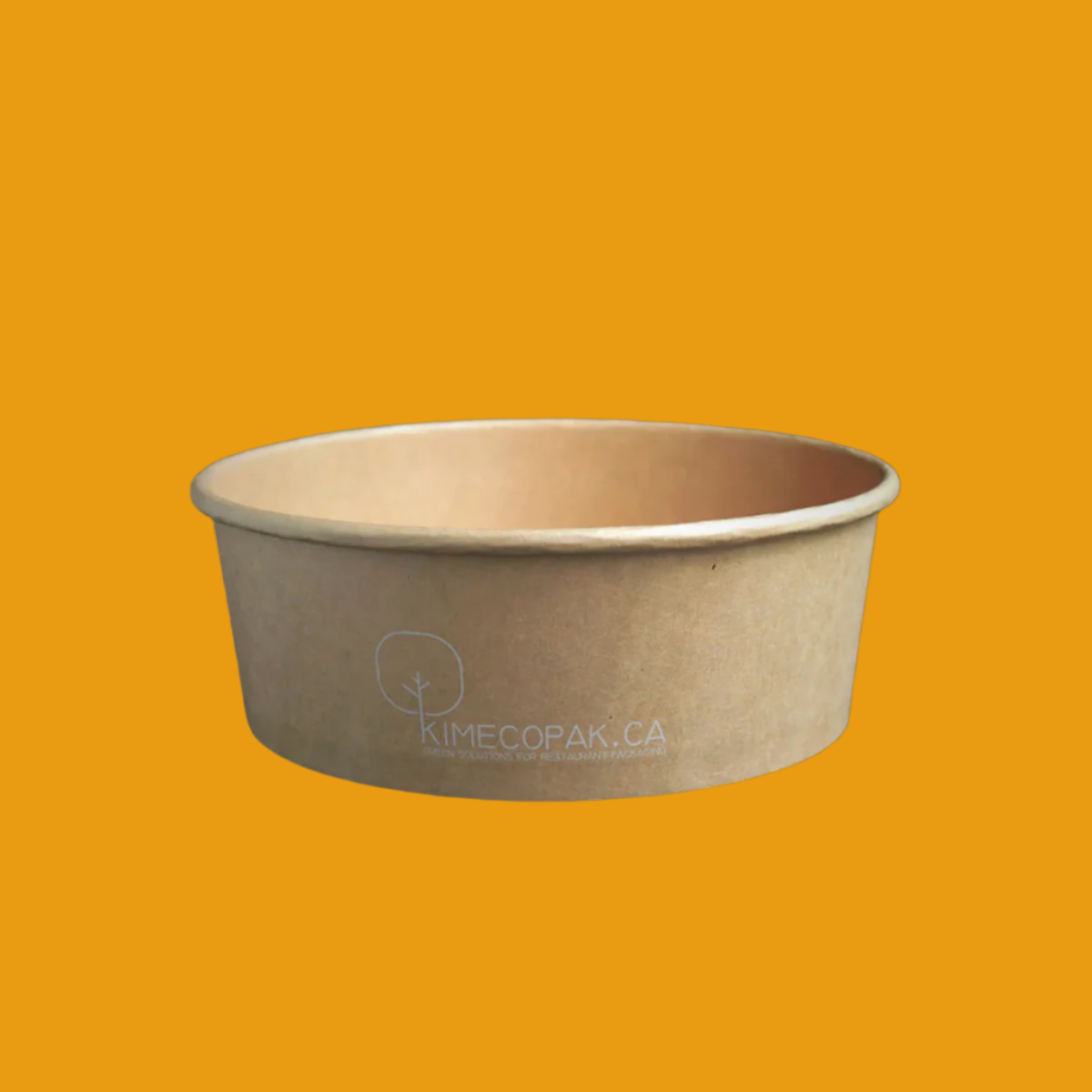Subscription boxes are more than a trend. They're a smart way to build recurring revenue and brand loyalty. Whether you're curating snacks, sauces, or sustainable kitchenware, this guide will help you launch your subscription box with clarity and confidence.
- How to Build a Successful Subscription Box for Your F&B Business
- Steps to Start Your Successful Subscription-based Meal Business
Understanding the Subscription Box Business Model

What is a subscription box and why it's booming
A subscription box is a service that delivers curated products to customers on a regular basis, typically monthly. The concept has gained substantial popularity in recent years, catering to diverse interests such as food, beauty, fitness, and more. The convenience of receiving tailored items at home, along with the element of surprise, plays a significant role in its appeal.
Benefits: predictable revenue, customer loyalty, branding
- Predictable revenue: Subscription models provide businesses with a steady income stream. By knowing how many subscribers you have, you can more accurately forecast revenue and inventory needs.
- Customer loyalty: Subscribers often develop a sense of loyalty to brands that keep delivering value consistently. As a result, they are less likely to switch to competitors.
- Branding: A subscription box allows businesses to showcase their brand personality, giving customers a unique insight into their values and product offerings.
Market growth and trends
The subscription box market has grown tremendously, with an estimated value of approximately $22 billion in the U.S. alone. This growth is fueled by trends such as personalized shopping experiences, the increasing emphasis on convenience, and the rise of e-commerce. Brands that adapt to changing consumer preferences, such as incorporating sustainable products, tend to see continued success.
Step 1: How to Start a Subscription Box Business: Define Your Niche and Target Market

Choose a food-focused niche: sauces, meal kits, snacks
Defining your niche is crucial to stand out amidst a crowded market. Consider various food-related options like:
- Sauces: Offering unique or local sauces can attract culinary enthusiasts.
- Meal kits: Providing convenient, ready-to-cook meals is ideal for busy families or individuals.
- Snacks: Focusing on healthy or gourmet snacks caters to a broad audience seeking convenience without compromising health.
Identify customer persona (age, lifestyle, values)
Creating a detailed customer persona helps in understanding your target audience. Consider factors like:
- Age: Are they millennials looking for trendy snacks or older customers wanting healthy meal kits?
- Lifestyle: Do they prefer organic options, quick meals, or gourmet flavors?
- Values: Sustainability, health, and quality may be guiding principles for your potential customers.
Analyze competitors and market gaps
Examining existing subscription boxes in your chosen niche can reveal opportunities. Look for market gaps, such as underserved demographics or specialized product options, that could differentiate your offering.
Step 2: Develop Your Subscription Box Concept

How to Start a Subscription Box Service With the Right Product Strategy
Creating a cohesive product strategy is key to your subscription box's success:
- Product selection that aligns with your restaurant brand: Ensure that your products reflect your brand’s ethos. For example, if you run a farm-to-table restaurant, highlight local, organic ingredients in your box.
- Eco-conscious packaging choices from the start: Modern consumers value sustainability. Utilizing compostable or recyclable materials positions your brand favorably.
- Building a memorable unboxing experience: Consider the presentation. From the packaging design to including personalized notes, a great unboxing experience makes a lasting impression on customers.
Step 3: Source Your Products and Sustainable Packaging

Build relationships with food producers
Establishing strong relationships with local food producers can ensure you have high-quality products while also supporting your community. Regular communication and fair negotiations can lead to mutually beneficial arrangements.
Choose compostable or recyclable packaging
Selecting sustainable packaging options enhances your brand's value. Compostable packing peanuts and recyclable cardboard not only appeal to eco-conscious customers but can also help reduce your environmental impact.
Ensure quality and consistency
Consistency in product quality cannot be overstated. Customers must know they can trust your subscription box to deliver value each time. Periodic quality checks and maintaining excellent supplier relationships can help uphold this standard.
Step 4: Build Your Online Store

Best platforms for food-based subscription businesses
Choosing the right platform is crucial for your online store. Some popular options for subscription box businesses include:
- Shopify: Known for its user-friendly interface and extensive app ecosystem.
- WooCommerce: A flexible, customizable option for those using WordPress.
- Cratejoy: Specifically designed for subscription boxes, it helps manage billing and customer subscriptions efficiently.
Design tips for UX and mobile experience
An intuitive user experience is vital. Ensure your website is easy to navigate, mobile-friendly, and visually appealing. Well-designed landing pages and clear calls to action can boost conversion rates significantly.
Integrating subscription management tools
To streamline operations, consider integrating subscription management tools. These can help you manage billing cycles, customer relationships, and inventory seamlessly, allowing you to focus on providing an excellent product.
Step 5: Pricing Your Subscription Box

Understanding costs: ingredients, packaging, shipping
Determining the price of your subscription box starts with a thorough understanding of your costs. Evaluate your ingredients or products, packaging materials, and shipping fees. Each component should be diligently calculated to set a price that allows for profitability while remaining attractive to your customers.
- Ingredients/Product Costs: Consider both direct costs for the products included and indirect costs, such as materials for assembly.
- Packaging: Pay attention to the quality of your packaging; it should reflect your brand image. Consider the cost of design, materials, and any special features (e.g.,-friendly).
- Shipping: Look into various shipping methods and their pricing. It may be beneficial to negotiate rates with carriers based on volume.
Value-based pricing strategies
Implementing value-based pricing means setting a price based on the perceived value to your customer rather than solely on your costs. Conduct surveys or focus groups to understand how much your target market is willing to pay for the value they expect from your box.
- Include exclusivity, unique features, or specialized products.
- Consider offering benefits like educational content, recipes, or community access.
Offering tiers or limited-time boxes
Consider creating tiered pricing or limited-time boxes to cater to different customer segments. This approach not only attracts a wider audience but also creates a sense of urgency.
- Tiered pricing: Offer a basic, premium, and deluxe tier, giving customers the choice based on their budget and preferences.
- Limited-time boxes: Create themed or seasonal boxes that are available for a limited time, encouraging impulse purchases.
Step 6: Launch and Market Your Subscription Box

Pre-launch list building and teaser campaigns
Before your official launch, it's crucial to build a list of potential customers. Create a landing page where interested parties can sign up for updates. You can run teaser campaigns through social media to generate buzz and encourage sign-ups.
Use countdowns and sneak peeks to increase anticipation.
Using social media, influencers, and email
Leverage social media platforms to reach a broader audience. Collaborate with influencers who align with your brand to promote your box. An effective email marketing campaign can also keep your audience informed and engaged.
Regular updates about your launch, features, and promotions can keep your list engaged and excited.
Early feedback and social proof
Once you launch, gather feedback from your initial customers. Encourage them to share their experiences on social media or review platforms. Positive reviews act as powerful social proof that can draw in new subscribers.
Consider offering a discount or incentive for referrals to amplify reach organically.
Step 7: Handle Fulfillment and Support

Packaging workflow and delivery logistics
Establish a clear workflow for packaging and shipping your boxes. The effectiveness of your fulfillment process directly impacts customer satisfaction.
Invest in inventory management software to track stock and streamline the packing process.
Handling customer service and inquiries
Good customer service is crucial for retaining subscribers. Be prepared to handle inquiries promptly and professionally.
Set up a dedicated support email and consider a chatbot on your website for common questions.
Retention tactics and subscriber experience
Keep customers engaged beyond just the initial purchase. Consider implementing loyalty programs, exclusive offers, or interactive content to enhance the subscriber experience.
Regularly check-in with subscribers through surveys to understand their preferences and how you can improve your service.
Step 8: Scale and Optimize Your Business

Measure KPIs: churn, lifetime value, ROI
Monitoring key performance indicators (KPIs) can provide insights into the health of your subscription box business. Key metrics include churn rate, which indicates how many subscribers are leaving, customer lifetime value (CLV), and return on investment (ROI).
Regularly analyze these metrics to identify trends and make informed decisions.
Automate repetitive tasks
As your business grows, automating repetitive tasks can save time and reduce errors.
Use tools for billing, inventory tracking, and email campaigns to free up your resources for strategic planning.
Expand to new customer segments or product lines
Look for opportunities within your niche to introduce new product lines or expand your customer base.
Research potential markets that align with your existing offerings or consider seasonal products that can attract different demographics.
Go Green: Sustainability Tips for Subscription Box Success

Highlighting eco-friendly values in your branding
Being environmentally conscious can resonate well with customers. Highlight your commitment to sustainability in your branding, messaging, and product selections.
Use biodegradable materials, or source local products to reduce your carbon footprint.
Educating customers about packaging disposal
Communicate the importance of responsible packaging disposal to your customers.
Provide clear instructions for recycling or composting materials included in your box.
Continuous improvement in sourcing and shipping
Continuously evaluate your sourcing and shipping methods. Seek out greener alternatives whenever possible, as this can not only benefit the planet but also appeal to a growing audience of eco-conscious consumers.
FAQs: How to Start and Grow Your Subscription Box

How much does it cost to launch?
The launch costs can vary widely depending on your product type, sourcing, and marketing strategies. On average, expect to invest anywhere from $5,000 to $20,000 initially.
What licenses do I need for food boxes?
If you are offering food products, you will typically need to adhere to local regulations and possibly secure food handling permits or licenses, depending on your region.
How do I keep subscribers engaged long-term?
Regular communication through curated content, personalized offers, and consistent quality will help maintain subscriber interest. Engage them through surveys to adapt to their changing preferences.









